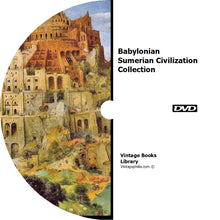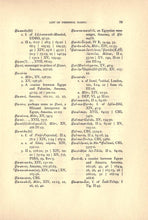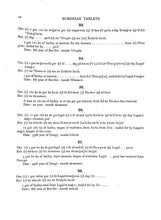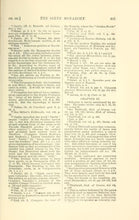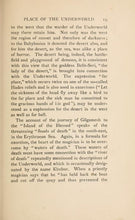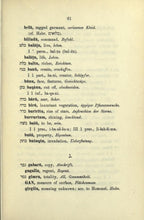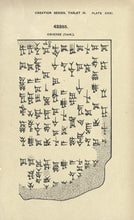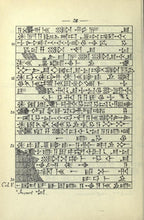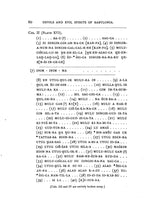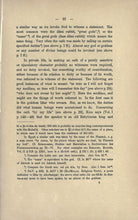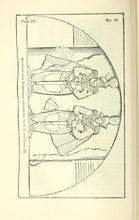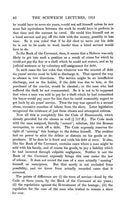
The history of the Sumerian civilization occurred at about 4000 B. C on the aquatic plain of the valley of the Tigris and the Euphrates Rivers. The social organization of the Sumerians, when compared to other existing societies, was intentionally built differently. The peculiar feature of the Sumerian communities is how the states were built and organized – constructed around a temple and governed by priests. This made majority of the community regarded as servant-slaves to the deity of the temple. People living in Sumer during that period felt unsafe and this gave the authority of the priest some sort of relevance. The temples and the priesthood offered succour and solace to the Sumerians during times of insecurity and troubles.
In the city of Sumer, besides the priests and locals, there also existed artisans who maximized their skills and knowledge by contributing to the civilization of Sumer. They spent most of their time building things such as chairs and desks, for the temple. They also produced items for the soldiers and warriors who defended the community. While these men fought to protect the temple, others were praying and interceding to the gods of the temple to prevent evil from coming upon the community.
As civilization grew for the Sumerians, they influenced the development of other communities, especially those in the northern region of Babylon. The Sumerians also developed the ancient city of Egypt. There are speculations that the Sumerians also brought civilization to the Indus River Valley. Numerous scholars have written quality recordings of the civilization of the Sumerians. Samuel Noah Kramer, a reputable scholar, made remarkable contributions to document the events of the civilization of the Sumerians. It was through these writings that referred to Sumer that led to the popularity of the Sumerian civilization. These writings were obtained by researches and inquiries of the ruins of Babylon and neighboring cities.
Take a look at the sample pages taken from just some of these books in the collection.
All of the book titles that are included in this DVD are listed as follows:
A chapter from the Babylonian books of private devotion by S. Langon (1908)
A guide to the Babylonian and Assyrian antiquities by The British Museum (1908)
A history of art in Chaldæa & Assyria by G. Perrot (1884)
A history of Babylon from the foundation of the monarchy to the Persian conquest by L. W. King (1915)
A history of Babylonia and Assyria Vol. 1 by R. W. Rogers (1900)
A history of Babylonia and Assyria Vol. 2 by R. W. Rogers (1900)
A history of Sumer and Akkad - an account of the early races of Babylonia from prehistoric times to the foundation of the Babylonian monarchy by L. W. King (1910)
A history of the Babylonians and Assyrians by G. S. Goodspeed (1902)
A Sumerian palace and the a cemetery at Kish Mesopotamia by E. Mackay (1929)
A Sumerian reading book by C. Gadd (1924)
A Sumero-Babylonian sign list; to which is added an Assyrian sign list, and a catalogue of the numerals, weights and measures used at various periods by S. Mercer (1918)
A system of accentuation for Sumero-Akkadian signs by C. A. Keiser (1919)
Amurru, the home of the Northern Semites, a study showing that the religion and culture of Israel are not of Babylonian origin by A. T. Clay (1909)
An essay on the age and antiquity of the Book of Nabathaean agriculture by E. Renan (1862)
An introduction to the study of the Babylonians and Assyrians by E. Fair (1907)
An old Babylonian version of the Gilgamesh epic, on the basis of recently discovered texts by M. Jastrow (1920)
Ancient Babylonia by C. H. W. Johns (1913)
Ancient fragments by I. P. Cory (1828)
Assyrian and Babylonian contracts, with Aramaic reference notes by J. H. Stevenson (1902)
Assyrian and Babylonian religious texts, being prayers, oracles, hymns, [etc.] copied from the original tablets by J. A. Craig (1895)
Babel and Bible by F. Delitzsch (1903)
Babylon and Persia by Z. Ragozin (1888)
Babylonia and Assyria, a sketch of their history by R. J. Murison (n.d.)
Babylonian and Assyrian laws, contracts and letters by C. H. W. Johns (1904)
Babylonian boundary-stones and memorial-tablets in the British Museum Vol. 1 by L. W. King (1912)
Babylonian boundary-stones and memorial-tablets in the British Museum Vol. 2 by L. W. King (1912)
Babylonian Life and History by E. A. Wallis-Budge (1891)
Babylonian Liturgies by S. Langdon (1913)
Babylonian Magic and Sorcery by L. W. King (1896)
Babylonian religion and mythology by L. W. King (1903)
Babylonian-Assyrian birth-omens, and their cultural significance by M. Jastrow (1914)
Babylonians and Assyrians - life and customs by A. Sayce (1900)
Bel, the Christ of ancient times by H. Radau (1908)
Chronicles concerning early Babylonian kings Vol. 1 by L. W. King (1907)
Chronicles concerning early Babylonian kings Vol. 2 by L. W. King (1907)
Chronology of the Larsa dynasty by E. M. Grice (1919)
Cory's ancient fragments of the Phoenician, Carthaginian, Babylonian, Egyptian, and other authors by I. P. Cory (1876)
Cuneiform documents in the Smith college library by E. Grant (1918)
Cuneiform parallels to the Old Testament by R. W. Rogers (1912)
Cuneiform texts in the Metropolitan Museum of Art by A. Moldenke (1893)
Damascus and Palmyra by C. G. Addison (1838)
Die Babylonische Chronik von F. Delitzsch (1906)
Die Kosmologie der Babylonier by P. Jensen (1890)
Early adventures in Persia, Susiana, and Babylonia, including a residence among the Bakhtiyari and other wild tribes before the discovery of Nineveh Vol. 1 by A. H. Layard (1887)
Early adventures in Persia, Susiana, and Babylonia, including a residence among the Bakhtiyari and other wild tribes before the discovery of Nineveh Vol. 2 by A. H. Layard (1887)
Egypt and Babylon from sacred and profane sources by G. Rawlinson (1885)
Egypt and Western Asia in the light of recent discoveries by L. W. King (1907)
Explorations in Bible lands during the 19th century by H. V. Hilprecht (1903)
Handel und Wandel in Altbabylonien von F. Delitzsch (1910)
Ishtar and Izdubar by L. Hamilton (1884)
Lands and peoples of the Bible by J. Baikie (1914)
Legends of Babylon and Egypt in relation to Hebrew tradition by L. W. King (1918)
Mesopotamia and Assyria by J. Baillie Fraser (1842)
Miscellaneous Babylonian inscriptions by G. A. Barton (1918)
Myths of Babylonia and Assyria by D. A. Mackenzie (1915)
Nineveh and its remains by A. H. Layard (1850)
Nineveh and Babylon by A. H. Layard (1867)
Nippur, or, Explorations and adventures on the Euphrates Vol. 1 by J. P. Peters (1897)
Nippur, or, Explorations and adventures on the Euphrates Vol. 2 by J. P. Peters (1897)
Old Babylonian business and legal documents (The RFH Collection) by T. J. Meek (1917)
On Traces of an indefinite article in Assyrian by R. C. Thompson (1902)
Pahlavi texts Part 1 (1880)
Pahlavi texts Part 2 (1880)
Pahlavi texts Part 3 (1880)
Pahlavi texts Part 4 (1880)
Pahlavi texts Part 5 (1880)
Personal names from cuneiform inscriptions of the Cassite Period Vol. 1 by A. T. Clay (1912)
Records from Erech, time of Nabonidus (555-538 B.C.) by R. P. Dougherty (1920)
Records of the past - being English translations of the ancient monuments of Egypt and western Asia by A. H. Sayce Vols. 1 - 6 (n.d.)
Records of the past - being English translations of the Ancient monuments of Egypt and western Asia Vols. 1 – 6, 8 - 12 by S. Birch (1873)
Religious and moral ideas in Babylonia-Assyria by S. Mercer (1919)
Report on the Wolfe expedition to Babylonia, 1884-85 by W. H. Ward (1886)
Researches in Assyrian and Babylonian geography by O. A. Toffteen (1908)
Selected Babylonian business and legal documents of the Hammurabi period by A. Ungnad (1907)
Selected Babylonian kudurru inscriptions by W. J. Hinke (1911)
Selected business documents of the Neo-Babylonian period by A. Ungnad (1908)
Selected temple accounts from Telloh, Yokha and Drehem; cuneiform tablets in the library of Princeton University by E. Chiera (1922)
Selected temple documents of the Ur Dynasty by C. E. Keiser (1919)
Sennacherib's campaign in Syria, Phoenicia, and Palestine by H. G. Kieme (1875)
Social life among the Babylonians and Assyrians by A. H. Sayce (1893)
Some Sumerian-Babylonian hymns of the Berlin collection transcribed and interpreted, with collation of the original tablets by M. I. Hussy (1907)
Sumerian and Semitic religious and historical texts Vol. 1 by S. Langdon (1923)
Sumerian grammar and chrestomathy by S. Langdon(1911)
Sumerian hymns from Cuneiform texts in the British Museum, transliteration, translation and commentary by F. A. Vanderburgh (1908)
Sumerian tablets from Umma in the John Rylands Library, Manchester by C. L. Bedale (1915)
Sumerian tablets in the Harvard Semitic Museum, copied with introduction and index of names of persons Vol. 1 by M. I. Hussy (1912)
Sumerian tablets in the Harvard Semitic Museum, copied with introduction and index of names of persons Vol. 2 by M. I. Hussy (1912)
Sumerier und Semiten in Babylonien by E. Meyer (1906)
Tablets from the Archives of Drehem; with a complete account of the origin of the Sumerian calendar, translation, and commentary by S. Langdon (1911)
Tablets from the R. Campbell Thompson collection in Haskell Oriental Museum (1911)
Tammuz and Ishtar - a monograph upon Babylonian religion and theology containing extensive extracts from the Tammuz liturgies and all of the Arbela oracles by S. Langdon (1914)
The Abu Habba cylinder of Nabuna'id, by Nabonidus, King of Babylonia, 6th cent. B.C (printed 1905)
The ancient East by D. G. Hogarth (1914)
The Assyrian Doomsday Book by C. H. W. Johns (1901)
The Babylonian conception of heaven and hell by A. Jeremias (1902)
The Babylonian expedition of the University of Pennsylvania – Vols. 1 – 13
The Babylonian Legends Of Creation by E. A. Wallis-Budge (1921)
The Babylonian story of the Deluge and the Epic of Gilgamish - with an account of the Royal Libraries of Nineveh by E. A. Wallis-Budge (1920)
The Babylonian tablets of the Berens collection by T. Pinches (1915)
The Chaldean account of Genesis by G. Smith (1880)
The Chaldean Account Of The Deluge by G. Smith (1873)
The Chaldean Oracles Of Zoroaster by S. Aude (1895)
The civilization of Babylonia and Assyria its remains, language, history, religion, commerce, law, art, and literature by M. Jastrow (1915)
The code of Hammurabi by P. Handcock (1920)
The Code Of Hammurabi translated by L. W. King (1915)
The Code of Hammurabi, King of Babylon about 2250 B.C. by R. F. Harper (1904)
The dawn of civilization - Egypt and Chaldæa by G. Maspero (1910)
The devils and evil spirits of Babylonia (Volume 1) (1903)
The devils and evil spirits of Babylonia (Volume 2) (1903)
The early Dynasties of Sumer and Akkad by C. J. Gadd (1921)
The five great monarchies of the ancient eastern world Vol. 1 by G. Rawlinson (190-)
The five great monarchies of the ancient eastern world Vol. 2 by G. Rawlinson (190-)
The great cylinder inscriptions A [and] B of Gudea, copied from the original clay cylinders of the Telloh Collection Vol. 1 by I. M. Price (1899)
The great cylinder inscriptions A [and] B of Gudea, copied from the original clay cylinders of the Telloh Collection Vol. 2 by I. M. Price (1899)
The History Of Assurbanipal by G. Smith (1871)
The history of Babylonia by G. Smith (18--)
The law of Hammurabi and Moses; a sketch by H. Grimme (1907)
The laws of Moses and the Code of Hammurabi by S. A. Cook (1903)
The letters and inscriptions of Hammurabi, King of Babylon, about B.C. 2200 Vol. 1 by L. W. King (1898)
The letters and inscriptions of Hammurabi, King of Babylon, about B.C. 2200 Vol. 2 by L. W. King (1898)
The life of the Ancient East - being some chapters of the romance of modern excavation by J. Baikie (1923)
The mysteries of Mithra by F. Cumont (1903)
The Nemesis of nations; studies in history the ancient world by W. R. Paterson (1907)
The oath in Babylonian and Assyrian literature by S. Mercer (1912)
The Old Testament in the light of the religion of Babylonia and Assyria by J. E. Thomas (1909)
The oldest code of laws in the world, the code of laws promulgated by Hammurabi, king of Babylon, B. C. 2285-2242 by C. H. W. Johns (1903)
The Parsi Religion by J. Wilson (1843)
The Philistines - their history and civilization by R. A. C. Macalister (1914)
The relations between the laws of Babylonia and the laws of the Hebrew peoples by C. H. W. Johns (1917)
The religion of Babylonia and Assyria by T. Pinches (1906)
The seven great monarchies of the ancient eastern world Vols. 1 - 3 by G. Rawlinson (1875)
The seven tablets of creation, or The Babylonian and Assyrian legends concerning the creation of the world and of mankind by L. W. King (1902)
The story of Chaldea from the earliest times to the rise of Assyria by Z. A. Ragozin (1886)
The teachings of Zoroaster, and the philosophy of the Parsi religion by S. A. Kapadia (1913)
The thrones and palaces of Babylon and Ninevah from sea to sea; a thousand miles on horseback by J. P. Newman (1876)
Travels and researches in Chaldæa and Susiana; with an account of excavations at Warka, the Erech of Nimrod, and Shúsh, Shushan the Palace of Esther, in 1849-52 by W. K. Loftus (1857)
Travels in Assyria by J. S. Buckingham (1830)
Ur dynasty tablets, texts chiefly from Tello und Drehem written during the reigns of Dungi, Bur-Sin, Gimil-Sin, and Ibn-Sin by J. B. Nies (1920)
Yatkar I Zariran or memoirs of Zarir by C. F. Horne (1917)
Zend Avesta Part 1 translated by J. Darmesteter (1880)
Zend Avesta Part 2 translated by J. Darmesteter (1880)
Zend Avesta Part 3 translated by J. Darmesteter (1880)
In the city of Sumer, besides the priests and locals, there also existed artisans who maximized their skills and knowledge by contributing to the civilization of Sumer. They spent most of their time building things such as chairs and desks, for the temple. They also produced items for the soldiers and warriors who defended the community. While these men fought to protect the temple, others were praying and interceding to the gods of the temple to prevent evil from coming upon the community.
As civilization grew for the Sumerians, they influenced the development of other communities, especially those in the northern region of Babylon. The Sumerians also developed the ancient city of Egypt. There are speculations that the Sumerians also brought civilization to the Indus River Valley. Numerous scholars have written quality recordings of the civilization of the Sumerians. Samuel Noah Kramer, a reputable scholar, made remarkable contributions to document the events of the civilization of the Sumerians. It was through these writings that referred to Sumer that led to the popularity of the Sumerian civilization. These writings were obtained by researches and inquiries of the ruins of Babylon and neighboring cities.
Take a look at the sample pages taken from just some of these books in the collection.
All of the book titles that are included in this DVD are listed as follows:
A chapter from the Babylonian books of private devotion by S. Langon (1908)
A guide to the Babylonian and Assyrian antiquities by The British Museum (1908)
A history of art in Chaldæa & Assyria by G. Perrot (1884)
A history of Babylon from the foundation of the monarchy to the Persian conquest by L. W. King (1915)
A history of Babylonia and Assyria Vol. 1 by R. W. Rogers (1900)
A history of Babylonia and Assyria Vol. 2 by R. W. Rogers (1900)
A history of Sumer and Akkad - an account of the early races of Babylonia from prehistoric times to the foundation of the Babylonian monarchy by L. W. King (1910)
A history of the Babylonians and Assyrians by G. S. Goodspeed (1902)
A Sumerian palace and the a cemetery at Kish Mesopotamia by E. Mackay (1929)
A Sumerian reading book by C. Gadd (1924)
A Sumero-Babylonian sign list; to which is added an Assyrian sign list, and a catalogue of the numerals, weights and measures used at various periods by S. Mercer (1918)
A system of accentuation for Sumero-Akkadian signs by C. A. Keiser (1919)
Amurru, the home of the Northern Semites, a study showing that the religion and culture of Israel are not of Babylonian origin by A. T. Clay (1909)
An essay on the age and antiquity of the Book of Nabathaean agriculture by E. Renan (1862)
An introduction to the study of the Babylonians and Assyrians by E. Fair (1907)
An old Babylonian version of the Gilgamesh epic, on the basis of recently discovered texts by M. Jastrow (1920)
Ancient Babylonia by C. H. W. Johns (1913)
Ancient fragments by I. P. Cory (1828)
Assyrian and Babylonian contracts, with Aramaic reference notes by J. H. Stevenson (1902)
Assyrian and Babylonian religious texts, being prayers, oracles, hymns, [etc.] copied from the original tablets by J. A. Craig (1895)
Babel and Bible by F. Delitzsch (1903)
Babylon and Persia by Z. Ragozin (1888)
Babylonia and Assyria, a sketch of their history by R. J. Murison (n.d.)
Babylonian and Assyrian laws, contracts and letters by C. H. W. Johns (1904)
Babylonian boundary-stones and memorial-tablets in the British Museum Vol. 1 by L. W. King (1912)
Babylonian boundary-stones and memorial-tablets in the British Museum Vol. 2 by L. W. King (1912)
Babylonian Life and History by E. A. Wallis-Budge (1891)
Babylonian Liturgies by S. Langdon (1913)
Babylonian Magic and Sorcery by L. W. King (1896)
Babylonian religion and mythology by L. W. King (1903)
Babylonian-Assyrian birth-omens, and their cultural significance by M. Jastrow (1914)
Babylonians and Assyrians - life and customs by A. Sayce (1900)
Bel, the Christ of ancient times by H. Radau (1908)
Chronicles concerning early Babylonian kings Vol. 1 by L. W. King (1907)
Chronicles concerning early Babylonian kings Vol. 2 by L. W. King (1907)
Chronology of the Larsa dynasty by E. M. Grice (1919)
Cory's ancient fragments of the Phoenician, Carthaginian, Babylonian, Egyptian, and other authors by I. P. Cory (1876)
Cuneiform documents in the Smith college library by E. Grant (1918)
Cuneiform parallels to the Old Testament by R. W. Rogers (1912)
Cuneiform texts in the Metropolitan Museum of Art by A. Moldenke (1893)
Damascus and Palmyra by C. G. Addison (1838)
Die Babylonische Chronik von F. Delitzsch (1906)
Die Kosmologie der Babylonier by P. Jensen (1890)
Early adventures in Persia, Susiana, and Babylonia, including a residence among the Bakhtiyari and other wild tribes before the discovery of Nineveh Vol. 1 by A. H. Layard (1887)
Early adventures in Persia, Susiana, and Babylonia, including a residence among the Bakhtiyari and other wild tribes before the discovery of Nineveh Vol. 2 by A. H. Layard (1887)
Egypt and Babylon from sacred and profane sources by G. Rawlinson (1885)
Egypt and Western Asia in the light of recent discoveries by L. W. King (1907)
Explorations in Bible lands during the 19th century by H. V. Hilprecht (1903)
Handel und Wandel in Altbabylonien von F. Delitzsch (1910)
Ishtar and Izdubar by L. Hamilton (1884)
Lands and peoples of the Bible by J. Baikie (1914)
Legends of Babylon and Egypt in relation to Hebrew tradition by L. W. King (1918)
Mesopotamia and Assyria by J. Baillie Fraser (1842)
Miscellaneous Babylonian inscriptions by G. A. Barton (1918)
Myths of Babylonia and Assyria by D. A. Mackenzie (1915)
Nineveh and its remains by A. H. Layard (1850)
Nineveh and Babylon by A. H. Layard (1867)
Nippur, or, Explorations and adventures on the Euphrates Vol. 1 by J. P. Peters (1897)
Nippur, or, Explorations and adventures on the Euphrates Vol. 2 by J. P. Peters (1897)
Old Babylonian business and legal documents (The RFH Collection) by T. J. Meek (1917)
On Traces of an indefinite article in Assyrian by R. C. Thompson (1902)
Pahlavi texts Part 1 (1880)
Pahlavi texts Part 2 (1880)
Pahlavi texts Part 3 (1880)
Pahlavi texts Part 4 (1880)
Pahlavi texts Part 5 (1880)
Personal names from cuneiform inscriptions of the Cassite Period Vol. 1 by A. T. Clay (1912)
Records from Erech, time of Nabonidus (555-538 B.C.) by R. P. Dougherty (1920)
Records of the past - being English translations of the ancient monuments of Egypt and western Asia by A. H. Sayce Vols. 1 - 6 (n.d.)
Records of the past - being English translations of the Ancient monuments of Egypt and western Asia Vols. 1 – 6, 8 - 12 by S. Birch (1873)
Religious and moral ideas in Babylonia-Assyria by S. Mercer (1919)
Report on the Wolfe expedition to Babylonia, 1884-85 by W. H. Ward (1886)
Researches in Assyrian and Babylonian geography by O. A. Toffteen (1908)
Selected Babylonian business and legal documents of the Hammurabi period by A. Ungnad (1907)
Selected Babylonian kudurru inscriptions by W. J. Hinke (1911)
Selected business documents of the Neo-Babylonian period by A. Ungnad (1908)
Selected temple accounts from Telloh, Yokha and Drehem; cuneiform tablets in the library of Princeton University by E. Chiera (1922)
Selected temple documents of the Ur Dynasty by C. E. Keiser (1919)
Sennacherib's campaign in Syria, Phoenicia, and Palestine by H. G. Kieme (1875)
Social life among the Babylonians and Assyrians by A. H. Sayce (1893)
Some Sumerian-Babylonian hymns of the Berlin collection transcribed and interpreted, with collation of the original tablets by M. I. Hussy (1907)
Sumerian and Semitic religious and historical texts Vol. 1 by S. Langdon (1923)
Sumerian grammar and chrestomathy by S. Langdon(1911)
Sumerian hymns from Cuneiform texts in the British Museum, transliteration, translation and commentary by F. A. Vanderburgh (1908)
Sumerian tablets from Umma in the John Rylands Library, Manchester by C. L. Bedale (1915)
Sumerian tablets in the Harvard Semitic Museum, copied with introduction and index of names of persons Vol. 1 by M. I. Hussy (1912)
Sumerian tablets in the Harvard Semitic Museum, copied with introduction and index of names of persons Vol. 2 by M. I. Hussy (1912)
Sumerier und Semiten in Babylonien by E. Meyer (1906)
Tablets from the Archives of Drehem; with a complete account of the origin of the Sumerian calendar, translation, and commentary by S. Langdon (1911)
Tablets from the R. Campbell Thompson collection in Haskell Oriental Museum (1911)
Tammuz and Ishtar - a monograph upon Babylonian religion and theology containing extensive extracts from the Tammuz liturgies and all of the Arbela oracles by S. Langdon (1914)
The Abu Habba cylinder of Nabuna'id, by Nabonidus, King of Babylonia, 6th cent. B.C (printed 1905)
The ancient East by D. G. Hogarth (1914)
The Assyrian Doomsday Book by C. H. W. Johns (1901)
The Babylonian conception of heaven and hell by A. Jeremias (1902)
The Babylonian expedition of the University of Pennsylvania – Vols. 1 – 13
The Babylonian Legends Of Creation by E. A. Wallis-Budge (1921)
The Babylonian story of the Deluge and the Epic of Gilgamish - with an account of the Royal Libraries of Nineveh by E. A. Wallis-Budge (1920)
The Babylonian tablets of the Berens collection by T. Pinches (1915)
The Chaldean account of Genesis by G. Smith (1880)
The Chaldean Account Of The Deluge by G. Smith (1873)
The Chaldean Oracles Of Zoroaster by S. Aude (1895)
The civilization of Babylonia and Assyria its remains, language, history, religion, commerce, law, art, and literature by M. Jastrow (1915)
The code of Hammurabi by P. Handcock (1920)
The Code Of Hammurabi translated by L. W. King (1915)
The Code of Hammurabi, King of Babylon about 2250 B.C. by R. F. Harper (1904)
The dawn of civilization - Egypt and Chaldæa by G. Maspero (1910)
The devils and evil spirits of Babylonia (Volume 1) (1903)
The devils and evil spirits of Babylonia (Volume 2) (1903)
The early Dynasties of Sumer and Akkad by C. J. Gadd (1921)
The five great monarchies of the ancient eastern world Vol. 1 by G. Rawlinson (190-)
The five great monarchies of the ancient eastern world Vol. 2 by G. Rawlinson (190-)
The great cylinder inscriptions A [and] B of Gudea, copied from the original clay cylinders of the Telloh Collection Vol. 1 by I. M. Price (1899)
The great cylinder inscriptions A [and] B of Gudea, copied from the original clay cylinders of the Telloh Collection Vol. 2 by I. M. Price (1899)
The History Of Assurbanipal by G. Smith (1871)
The history of Babylonia by G. Smith (18--)
The law of Hammurabi and Moses; a sketch by H. Grimme (1907)
The laws of Moses and the Code of Hammurabi by S. A. Cook (1903)
The letters and inscriptions of Hammurabi, King of Babylon, about B.C. 2200 Vol. 1 by L. W. King (1898)
The letters and inscriptions of Hammurabi, King of Babylon, about B.C. 2200 Vol. 2 by L. W. King (1898)
The life of the Ancient East - being some chapters of the romance of modern excavation by J. Baikie (1923)
The mysteries of Mithra by F. Cumont (1903)
The Nemesis of nations; studies in history the ancient world by W. R. Paterson (1907)
The oath in Babylonian and Assyrian literature by S. Mercer (1912)
The Old Testament in the light of the religion of Babylonia and Assyria by J. E. Thomas (1909)
The oldest code of laws in the world, the code of laws promulgated by Hammurabi, king of Babylon, B. C. 2285-2242 by C. H. W. Johns (1903)
The Parsi Religion by J. Wilson (1843)
The Philistines - their history and civilization by R. A. C. Macalister (1914)
The relations between the laws of Babylonia and the laws of the Hebrew peoples by C. H. W. Johns (1917)
The religion of Babylonia and Assyria by T. Pinches (1906)
The seven great monarchies of the ancient eastern world Vols. 1 - 3 by G. Rawlinson (1875)
The seven tablets of creation, or The Babylonian and Assyrian legends concerning the creation of the world and of mankind by L. W. King (1902)
The story of Chaldea from the earliest times to the rise of Assyria by Z. A. Ragozin (1886)
The teachings of Zoroaster, and the philosophy of the Parsi religion by S. A. Kapadia (1913)
The thrones and palaces of Babylon and Ninevah from sea to sea; a thousand miles on horseback by J. P. Newman (1876)
Travels and researches in Chaldæa and Susiana; with an account of excavations at Warka, the Erech of Nimrod, and Shúsh, Shushan the Palace of Esther, in 1849-52 by W. K. Loftus (1857)
Travels in Assyria by J. S. Buckingham (1830)
Ur dynasty tablets, texts chiefly from Tello und Drehem written during the reigns of Dungi, Bur-Sin, Gimil-Sin, and Ibn-Sin by J. B. Nies (1920)
Yatkar I Zariran or memoirs of Zarir by C. F. Horne (1917)
Zend Avesta Part 1 translated by J. Darmesteter (1880)
Zend Avesta Part 2 translated by J. Darmesteter (1880)
Zend Avesta Part 3 translated by J. Darmesteter (1880)











